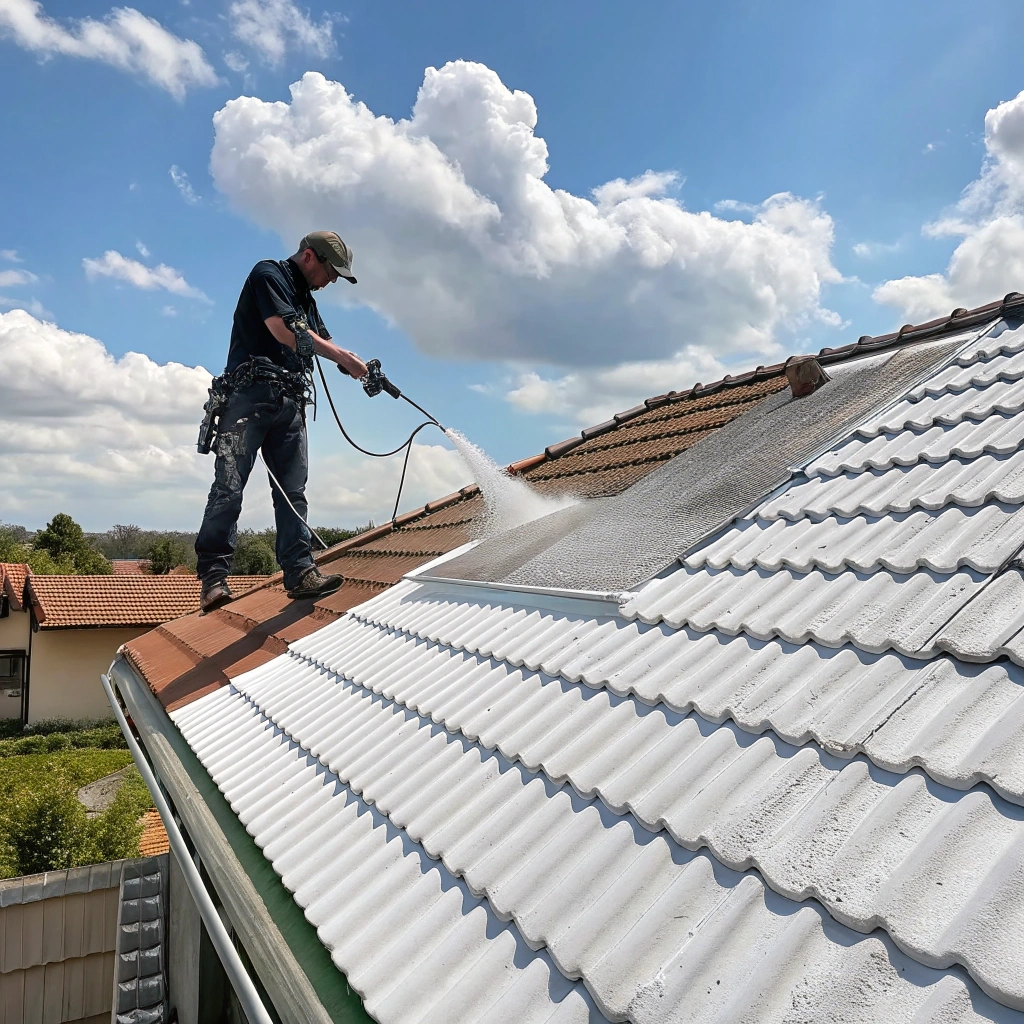Roof coating is a protective layer applied to the surface of a roof to extend its lifespan, enhance its performance, and improve energy efficiency.
It acts as a barrier against environmental elements such as UV radiation, rain, wind, and temperature fluctuations.
Roof coatings can be applied to a wide range of roof types, including metal, asphalt, concrete, modified bitumen, and single-ply membranes.
Types of Roof Coating
There are several types of roof coatings, each with distinct properties suited for different applications:
1. Acrylic Coatings
-
Water-based and easy to apply.
-
Excellent UV resistance and reflectivity.
-
Ideal for mild to moderate climates.
-
Cost-effective but may not be as durable as other types under standing water conditions.
2. Silicone Coatings
-
Moisture-cured and highly resistant to ponding water.
-
Excellent for roofs that experience standing water.
-
High UV resistance and flexibility.
-
More expensive than acrylic but offers better longevity in wet climates.
3. Polyurethane Coatings
-
Solvent-based, offering excellent resistance to impact and foot traffic.
-
Often used on commercial roofs with high wear.
-
Comes in aliphatic (UV stable) and aromatic (non-UV stable) forms.
4. Asphalt Coatings
-
Traditionally used for built-up roofs (BUR).
-
Black or aluminum-based; offers waterproofing but low reflectivity.
-
Less commonly used in modern reflective applications.
Benefits of Roof Coating
1. Prolongs Roof Lifespan
Coatings help prevent damage from UV rays, oxidation, and thermal expansion, which can degrade roofing materials over time.
2. Energy Efficiency
Reflective coatings (especially white or light-colored ones) reduce heat absorption, lowering cooling costs and reducing the building’s carbon footprint.
3. Waterproofing
Roof coatings can seal minor leaks and cracks, adding an extra layer of waterproofing protection.
4. Sustainability
Many coatings can be reapplied every few years, reducing the need for complete roof replacements and minimizing waste.
5. Cost Savings
Roof coatings are significantly less expensive than full roof replacement, offering an economical way to extend the functional life of a roof.
Considerations Before Applying Roof Coating
-
Compatibility: Ensure the coating is compatible with the existing roofing material.
-
Weather Conditions: Ideal conditions are dry with moderate temperatures.
-
Roof Condition: Severely damaged roofs may not be good candidates for coating and may require more extensive repairs or replacement.
-
Manufacturer Guidelines: Follow product-specific recommendations for application thickness, curing time, and maintenance.
Conclusion
Roof coating is a cost-effective, sustainable, and energy-efficient solution for maintaining and protecting roofing systems. With various options tailored for specific environmental and structural conditions, selecting the right type and applying it correctly can significantly enhance the durability and performance of a building’s roof.


